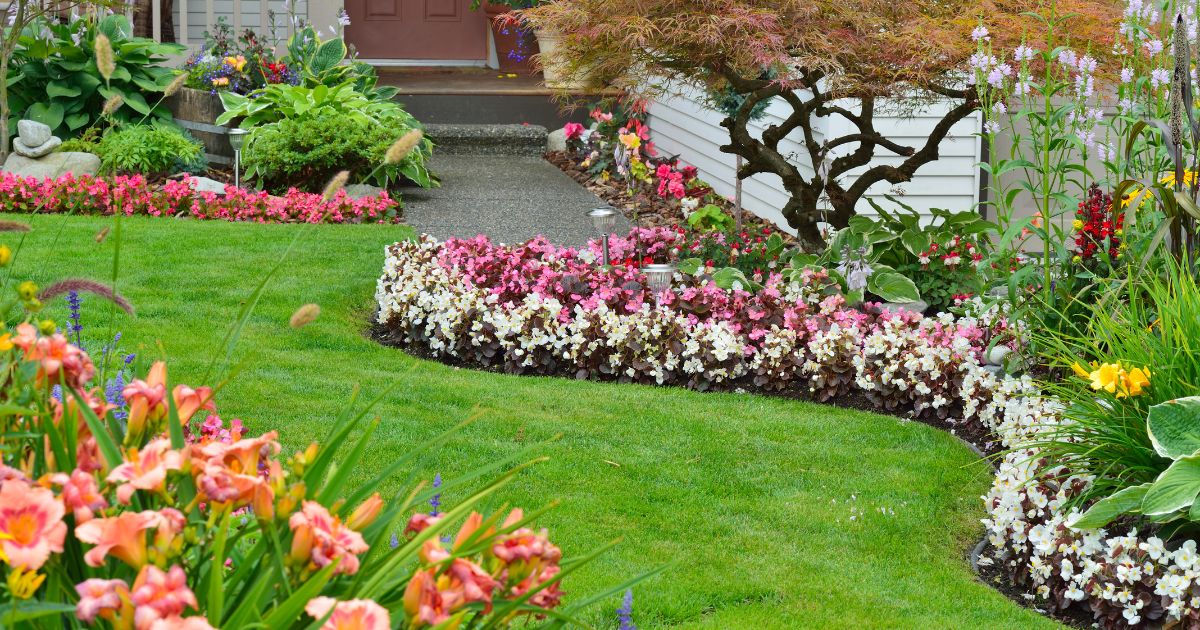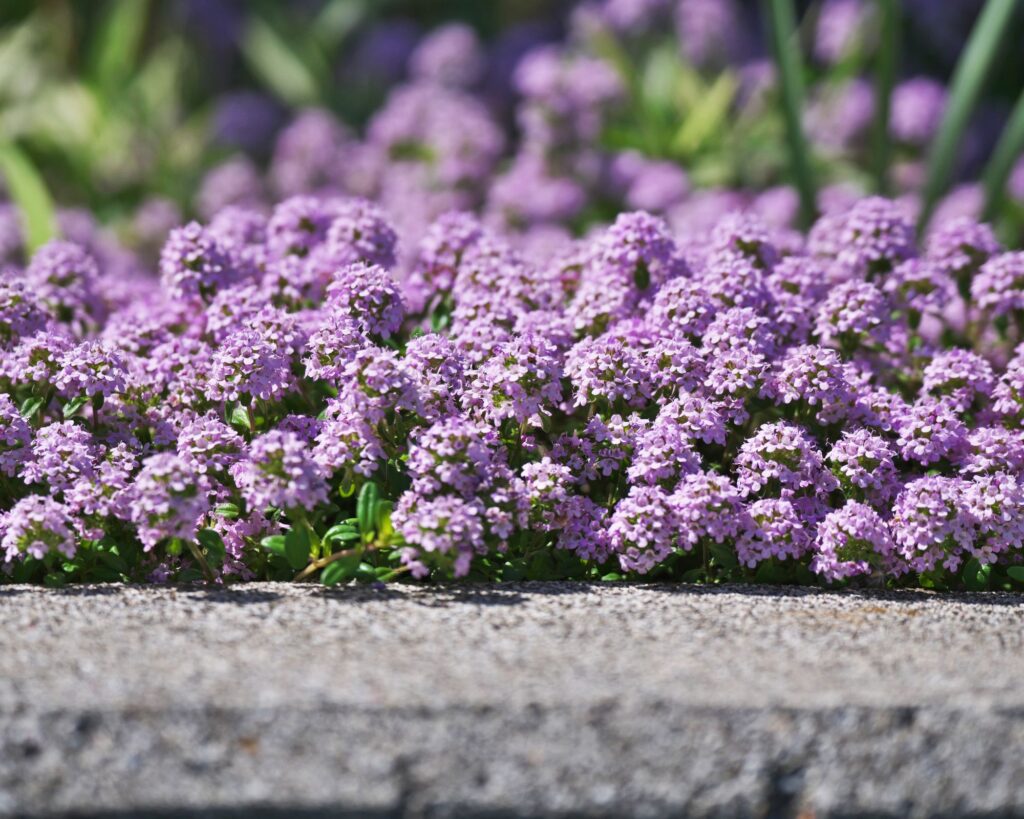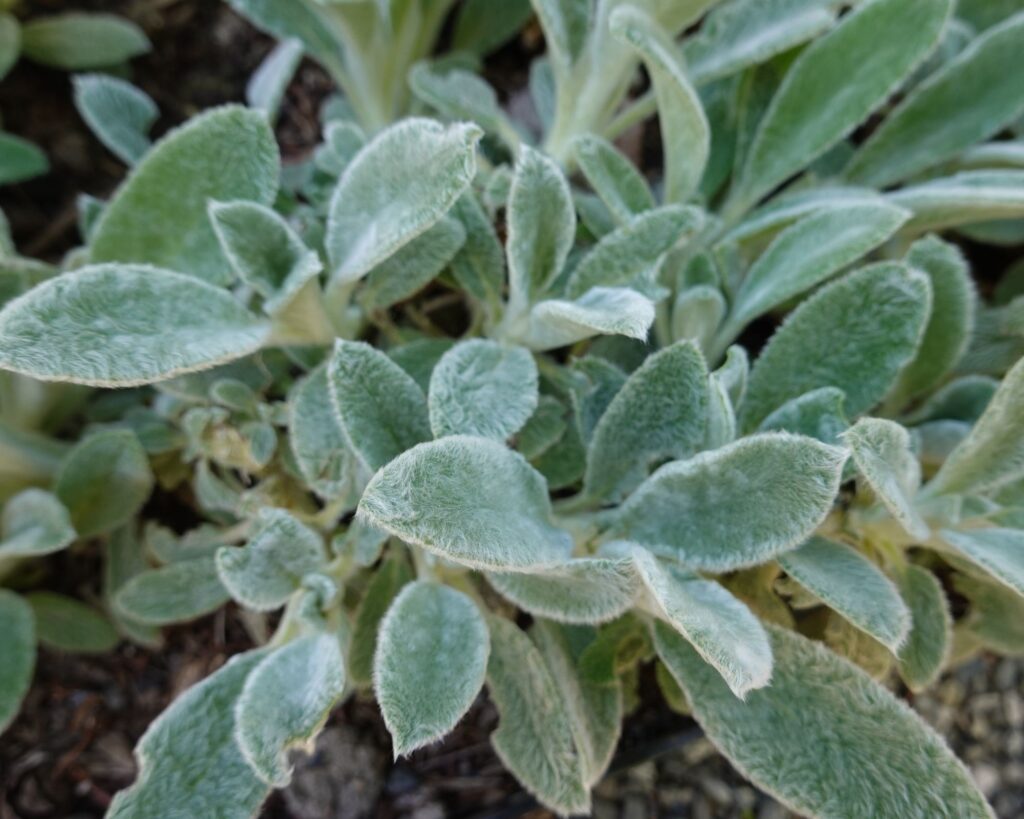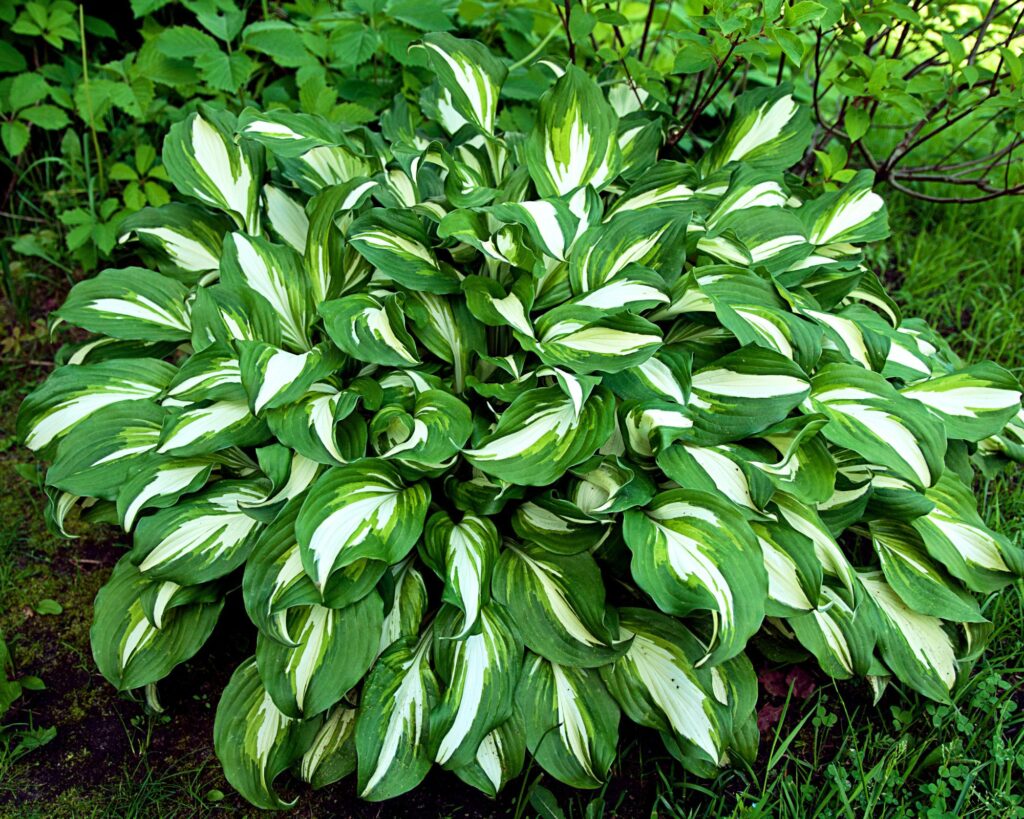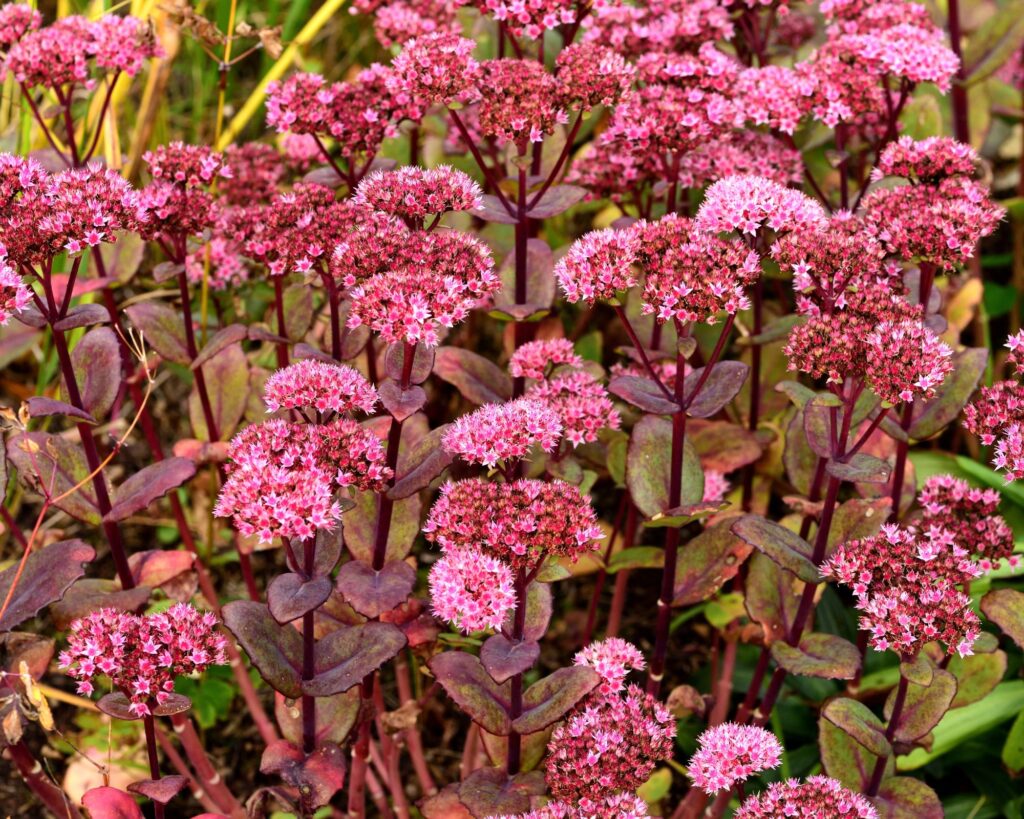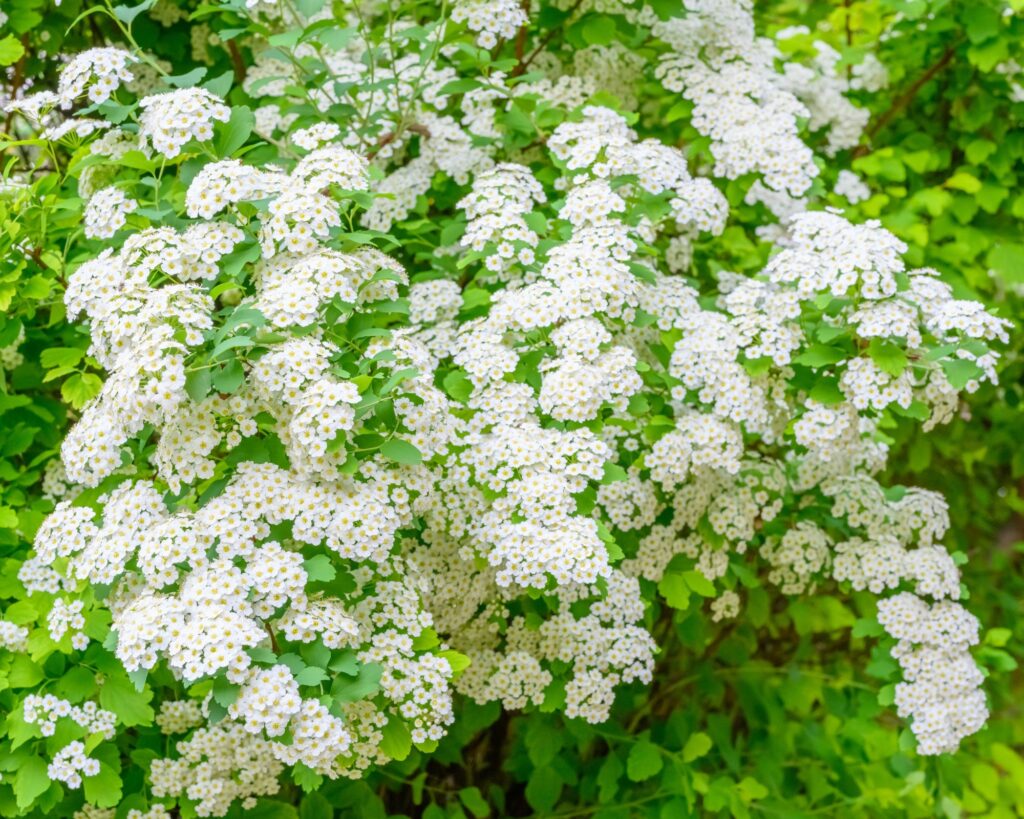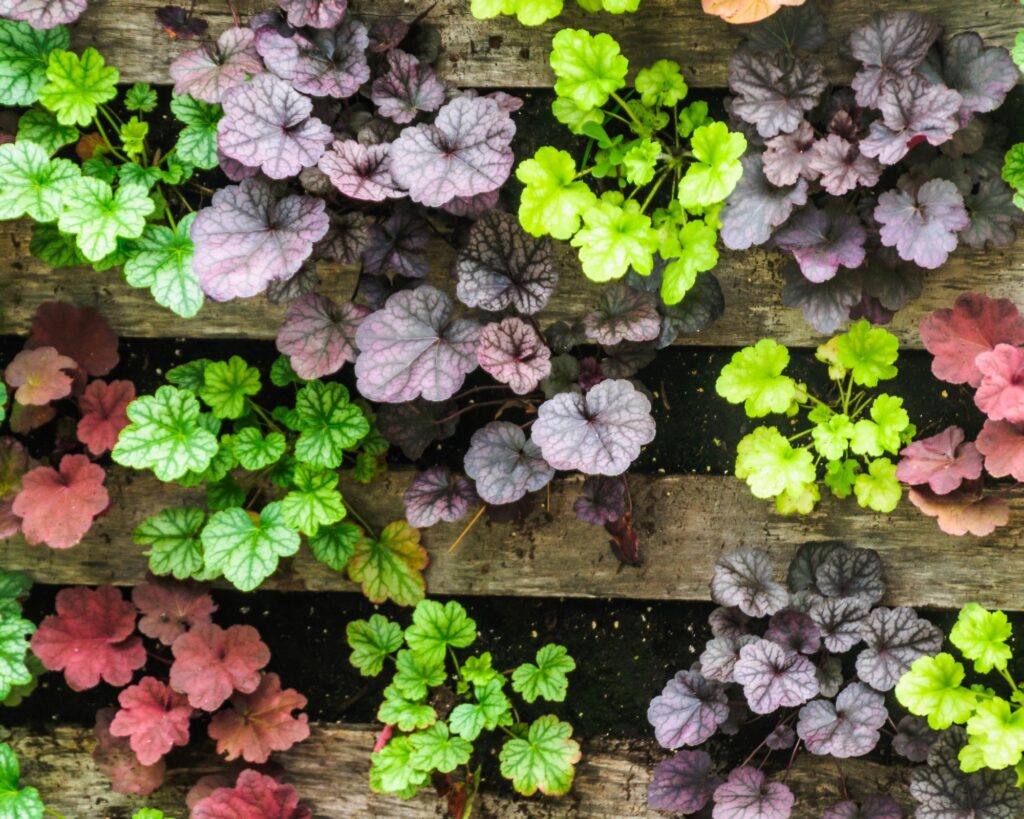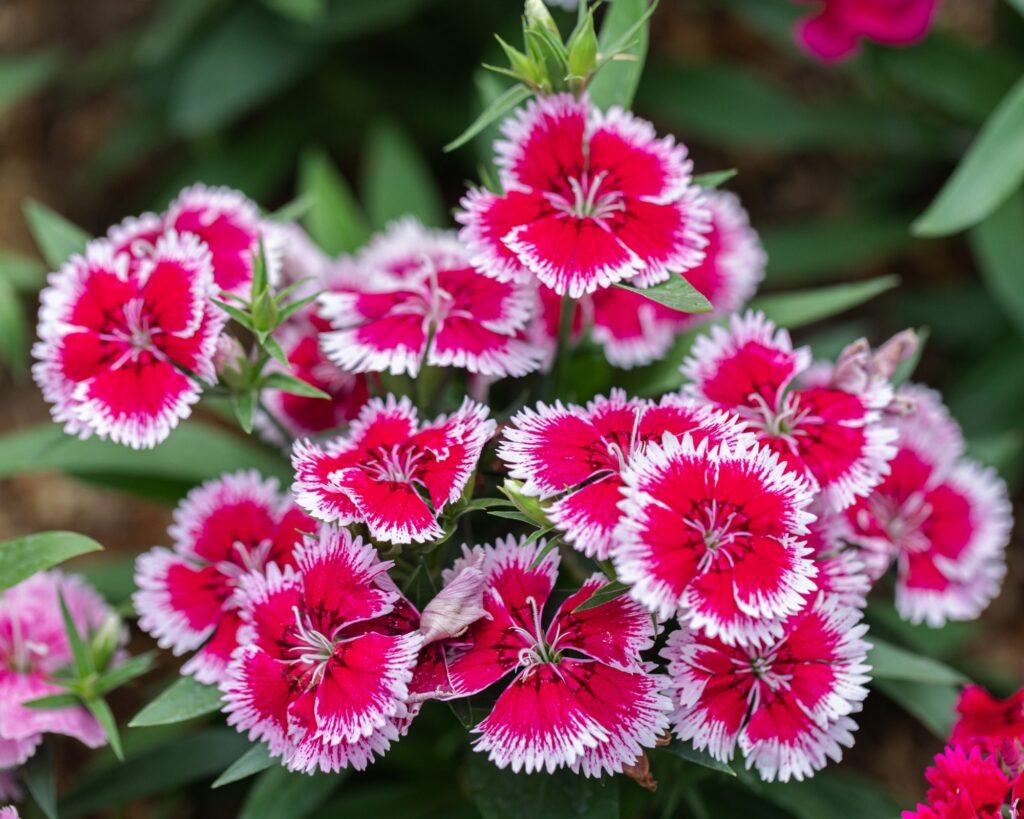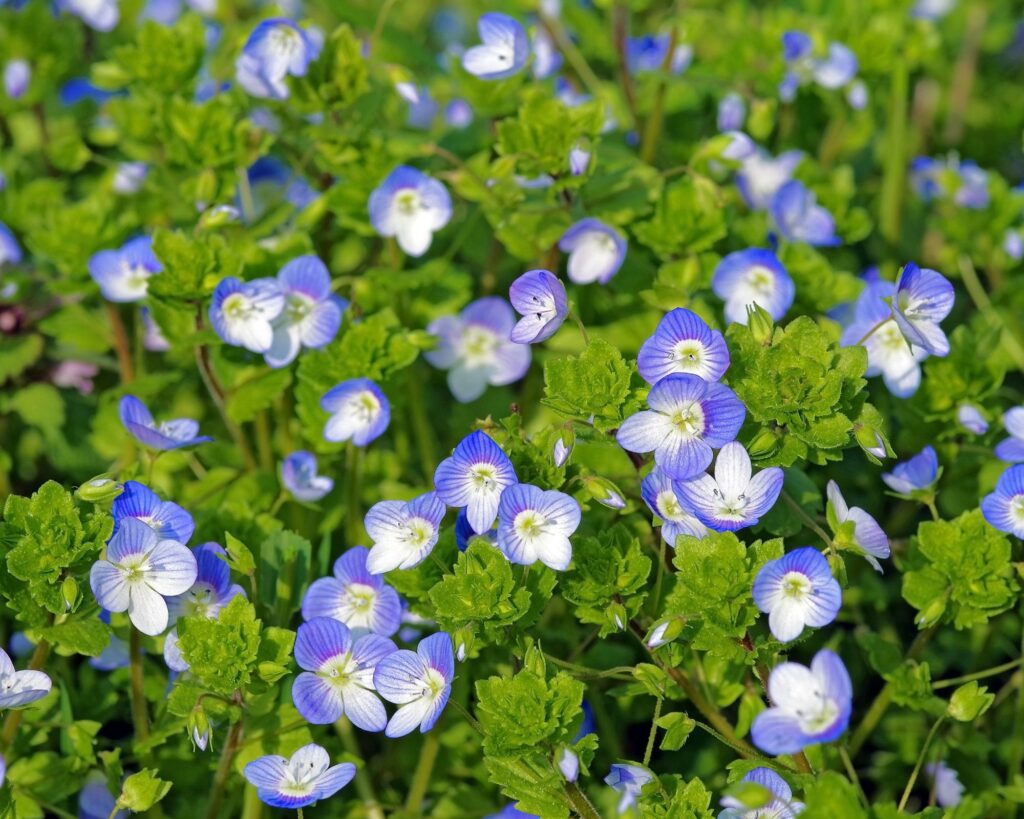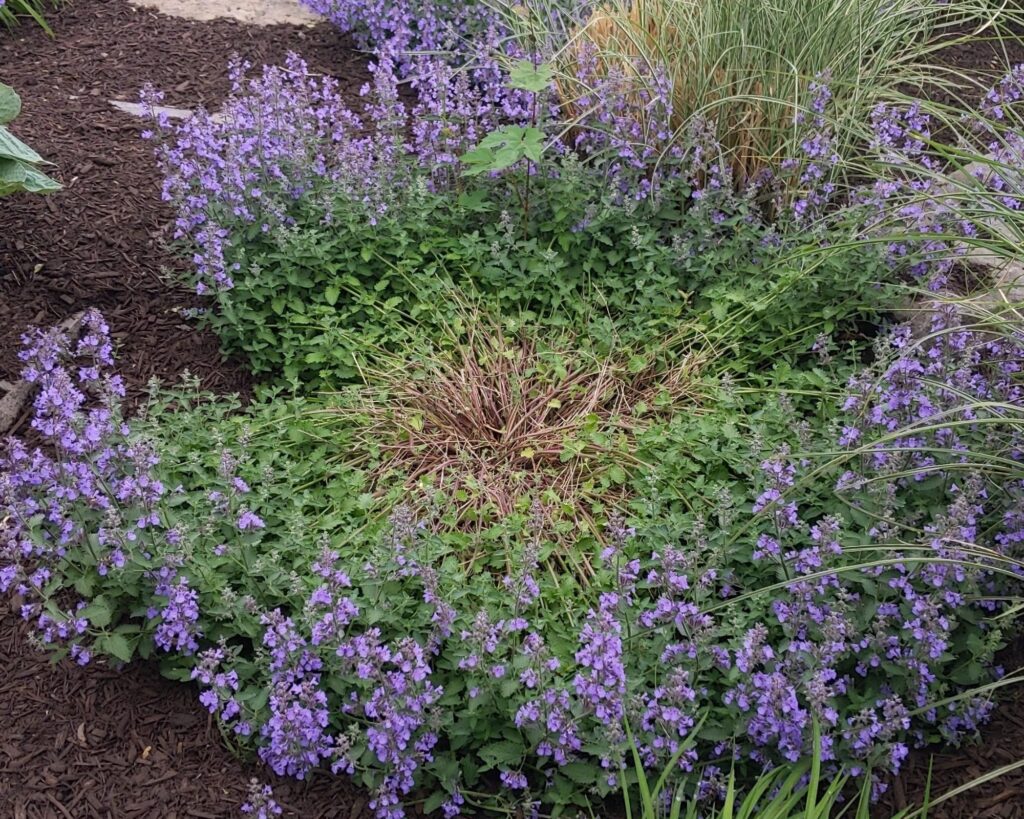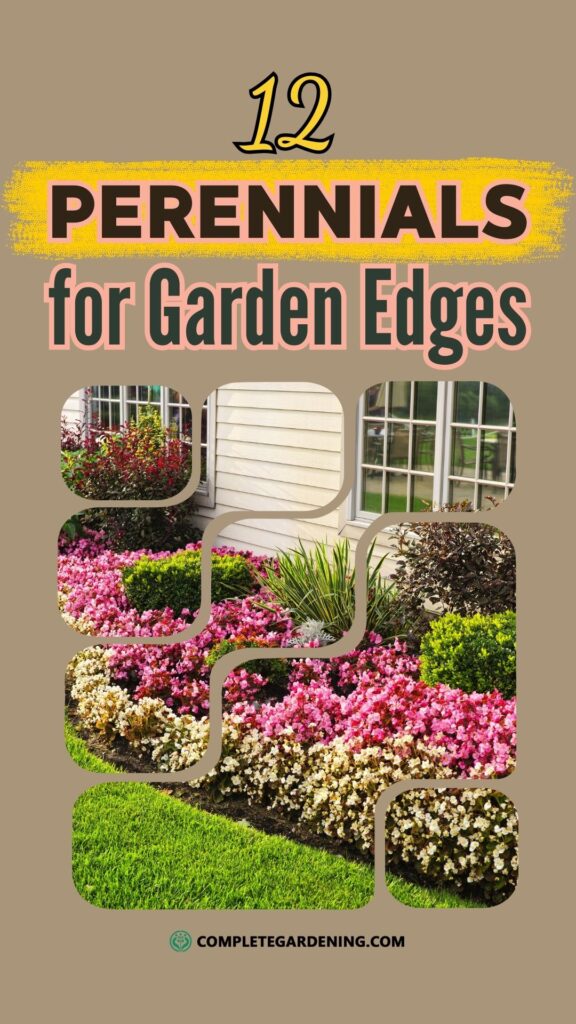What if I told you that transforming your garden into a picture-perfect paradise is as simple as choosing the right border plants?
Low-growing perennials are the unsung heroes of garden design, providing vibrant color, structure, and charm – all while demanding minimal care.
Curious about which plants can turn your garden borders into a stunning focal point? In this post, we’ll uncover the 12 best low-growing perennials that will have your garden looking its best, year after year.
1. Creeping Thyme (Thymus serpyllum)
Height: 2-3 inches
Sunlight: Full sun
Soil: Well-drained, sandy soil
Creeping Thyme is a versatile ground cover that offers both beauty and functionality. Its dense, mat-forming growth habit makes it an excellent choice for borders.
In addition to its attractive, tiny, aromatic leaves, Creeping Thyme produces small, pink to purple flowers in the summer that attract pollinators like bees and butterflies.
It’s drought-tolerant and can thrive in poor soils, making it ideal for rock gardens or between stepping stones.
2. Mazus (Mazus reptans)
Height: 2-6 inches
Sunlight: Full sun to partial shade
Soil: Moist, well-drained soil
Mazus is a low-growing perennial that forms a lush, green carpet in your garden. It’s perfect for edging paths or filling in between pavers.
In late spring to early summer, Mazus produces small, blue or white, snapdragon-like flowers that add a touch of color to your garden.
This plant thrives in moist conditions and can tolerate light foot traffic, making it a practical choice for high-traffic areas.
3. Dwarf Mondo Grass (Ophiopogon japonicus ‘Nana’)
Height: 2-4 inches
Sunlight: Full sun to partial shade
Soil: Well-drained soil
Dwarf Mondo Grass is a grass-like perennial that is prized for its neat, tufted appearance. Its dark green, narrow leaves create a dense, low-growing ground cover that is perfect for defining garden borders.
This plant is incredibly low-maintenance, tolerating a range of light conditions from full sun to shade. It’s also deer-resistant, making it a good choice for gardens in areas where deer are common.
4. Lamb’s Ear (Stachys byzantina)
Height: 6-12 inches
Sunlight: Full sun to partial shade
Soil: Well-drained, average soil
Lamb’s Ear is a beloved perennial known for its soft, velvety, silver-gray leaves. Its low-growing, spreading habit makes it an excellent choice for borders, where it provides a striking contrast to other plants with its unique texture and color.
In late spring to early summer, Lamb’s Ear may produce spikes of purple-pink flowers, though many gardeners choose to remove the flower stalks to maintain the plant’s tidy appearance.
Lamb’s Ear is drought-tolerant once established, making it ideal for sunny, dry areas.
5. Hosta (Hosta spp.)
Height: 6-30 inches, depending on the variety
Sunlight: Partial to full shade
Soil: Moist, well-drained soil
Hostas are a favorite among shade gardeners, and for good reason. These perennials come in a wide range of sizes, colors, and textures, with some varieties growing low enough to be used as border plants.
Their large, lush leaves add a tropical feel to shady garden beds, while their summer-blooming flowers attract pollinators.
Hostas thrive in moist, well-drained soil and are perfect for adding color and texture to shaded borders.
6. Sedum (Sedum spp.)
Height: 3-8 inches
Sunlight: Full sun
Soil: Well-drained, sandy or gravelly soil
Sedum, also known as stonecrop, is a hardy succulent that comes in a variety of forms, from low-growing ground covers to upright varieties. For borders, look for low-growing types like Sedum ‘Dragon’s Blood’ or Sedum ‘Angelina’.
These plants are drought-tolerant and thrive in poor soils, making them perfect for rock gardens or dry borders. Sedums are also known for their ability to attract pollinators, and their foliage often turns attractive shades of red or orange in the fall.
7. Ajuga (Ajuga reptans)
Height: 4-6 inches
Sunlight: Full sun to partial shade
Soil: Moist, well-drained soil
Ajuga, or Bugleweed, is a fast-spreading ground cover that forms a dense mat of foliage, making it an ideal choice for edging paths or filling in gaps between other plants.
Its leaves come in various colors, including green, bronze, and variegated, and in late spring, Ajuga produces spikes of blue, purple, or white flowers.
This plant is tolerant of a wide range of conditions, including poor soils and light shade, making it a versatile addition to any garden.
8. Sweet Alyssum (Lobularia maritima)
Height: 4-6 inches
Sunlight: Full sun to partial shade
Soil: Well-drained soil
Sweet Alyssum is a charming annual that often self-seeds, behaving like a perennial in many gardens. It forms low, spreading mounds of tiny, honey-scented flowers that bloom in white, pink, lavender, or purple throughout the growing season.
Sweet Alyssum is perfect for softening the edges of garden beds, pathways, or containers, and it’s a magnet for pollinators. It prefers well-drained soil and can tolerate light shade, though it blooms best in full sun.
9. Coral Bells (Heuchera spp.)
Height: 8-12 inches
Sunlight: Partial shade to full shade
Soil: Moist, well-drained soil
Coral Bells, or Heuchera, are known for their colorful foliage, which ranges from deep purples to bright greens, often with striking patterns. These perennials form compact clumps that are perfect for edging shaded garden beds.
In addition to their attractive leaves, Coral Bells produce delicate, bell-shaped flowers on tall stalks in the late spring to early summer. They thrive in rich, well-drained soil and are ideal for adding a pop of color to shaded borders.
10. Dianthus (Dianthus spp.)
Height: 6-12 inches
Sunlight: Full sun
Soil: Well-drained, slightly alkaline soil
Dianthus, also known as pinks, is a classic perennial that produces fragrant, fringed flowers in shades of pink, red, and white. The low-growing varieties, such as Dianthus ‘Tiny Rubies’ or Dianthus ‘Firewitch’, are perfect for borders.
Dianthus prefers well-drained soil and thrives in full sun, making it a great choice for rock gardens or sunny borders. In addition to their charming flowers, Dianthus plants have a pleasant clove-like scent, adding another dimension to your garden.
11. Speedwell (Veronica spp.)
Height: 6-12 inches
Sunlight: Full sun to partial shade
Soil: Moist, well-drained soil
Speedwell, or Veronica, is a versatile perennial that comes in both upright and low-growing forms. For borders, consider low-growing varieties like Veronica ‘Georgia Blue’ or Veronica ‘Waterperry Blue’.
These plants produce masses of small, blue or purple flowers in the spring, and their foliage often takes on a reddish hue in the fall. Speedwell is easy to grow and attracts pollinators, making it a great addition to any garden.
12. Nepeta (Nepeta spp.)
Height: 12-18 inches
Sunlight: Full sun
Soil: Well-drained, average soil
Nepeta, commonly known as catmint, is a tough and resilient perennial that’s perfect for border planting. Its soft, gray-green foliage and spikes of lavender-blue flowers create a soothing and serene effect in the garden.
Nepeta blooms from late spring through summer, providing a long season of color. It’s also highly attractive to pollinators like bees and butterflies, making it a great choice for supporting local wildlife.
Incorporating low-growing perennial border plants into your garden is a surefire way to create a visually appealing and cohesive landscape.
These plants not only add color and texture but also help define your garden’s edges, creating a natural flow from one area to another.
As you plan your garden borders, consider mixing and matching these perennials to create layers of color and texture that will keep your garden looking beautiful through every season.
So, get planting, and watch your garden transform into a stunning tapestry of color and life!
